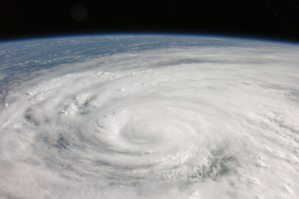When you can’t cut, estimate your losses

Hurricane Sandy has laid bare the frailty of an urban infrastructure not accustomed to large-scale natural disasters. As others have recently explained, climate change modeling suggests that the frequency of this kind of catastrophe will only rise in the coming decades.
These frailties have lead to enormous and unexpected financial losses. But what if we could estimate the consequences of these events before they strike? The challenge obviously lies in the lack of pre-existing data. Hurricanes in the Southeast are nothing new, so modeling the financial impact in that region isn’t terribly difficult. Not so in the Northeast.
Last week, AIR Worldwide executive Jay Guin gave a guest lecture on this topic in civil and environmental engineering professor Auroop Ganguly’s graduate class, Applied Time Series and Spatial Statistics. Guin leads the research and development team at AIR, which develops catastrophe modeling and analytics tools for the “reinsurance” industry.
Reinsurance, Guin explained, provides insurance for insurance companies. The industry picked up steam after 1992’s Hurricane Andrew, which led to an unprecedented $16 billion in losses that insurance companies could not handle alone. In their bid to develop natural catastrophe or “nat cat” models, reinsurance professionals face significant challenges, Guin said. Beyond a scarcity of data, these include a high level of uncertainty and sensitivity in loss estimation along with the difficult task of integrating statistical and physical modeling approaches.

Northeastern PhD candidate Evan Kodra (left) and research associate Rachindra Mawalagedara (right) attended the lecture and contributed significantly to this post. Here they are with Jay Guin, AIR Worldwide’s R&D lead.
AIR runs tens of thousands of plausible model simulations to understand the possible risks to unexpected areas. For example, they’ll use hurricane data from 1900 onwards to understand and predict possible hurricane tracks and then determine the potential damages that can happen if a hurricane follows a particular track. Integration of statistical and physics based models give a more accurate picture for impact assessment.
Research taking place in Ganguly’s Sustainability and Data Sciences Lab complements that of the reinsurance industry. They solve problems in climate change, natural hazards and computational data sciences. The insights they gain can help companies like AIR to solve problems for insurance and reinsurance clients dealing with natural hazards. At the same time, data about robustness, vulnerability and exposure coming from the reinsurance industry helps Ganguly’s team with its research about extreme weather.
Together, the research field and the reinsurance industry are constantly making improvements to prediction and estimation technologies. Hopefully these tools will one day allow us to steer clear of the financial destruction we’re seeing with Sandy.






